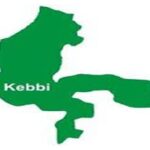The money game: How Top Soccer Clubs Clashed With Rules on Financial Fair Play
The global reach of soccer has turned the sport into a financial behemoth, with funds flooding in from TV rights as well as gate receipts and other sources. Revenues at European clubs have tripled since 2000, according to a UEFA report published in January, and reached 18.5 billion euros in 2016. That dwarfs America’s largest professional sport, the National Football League, which some analysts estimate has annual revenue of about $14 billion (11 billion euros). The European game’s popularity is increasing in the United States, which is due to co-host the 2026 FIFA World Cup.
But clubs also face huge outlays, particularly in acquiring star players, who can cost tens of millions of euros in transfer fees – the sum paid by one club to another to release a player from a contract so that they can change clubs. On top of their purchase cost, star players can command wages running to hundreds of thousands of euros a week.
With many clubs racking up hefty losses, UEFA introduced its Financial Fair Play rules in 2010 and began evaluating clubs in 2013. The rules broadly require club spending not to exceed revenue from television rights, gate receipts, competition prize money and sponsorship. Since 2015, clubs have been allowed to lose no more than 30 million euros over three seasons, on the grounds that they should not simply be funded by big debts or super-rich owners. Before that, when UEFA was phasing in the rules, clubs were allowed to lose up to 45 million euros over two years.
The aim is to sustain viable competition between a wide range of European clubs over the long term.
Infantino, who was born in Switzerland, speaks seven languages, including Arabic, and qualified as a lawyer. He became a key promoter of the new policy as it was being introduced. In early 2014, he told news media the rules were designed to save European soccer from “greed, reckless spending and financial insanity,” according to UEFA’s website. He also warned clubs that his organisation was “not afraid to take the necessary measures to protect the game and to maintain the integrity of its competitions.”
The rules required clubs wishing to participate in UEFA competitions to submit information about their finances for monitoring. In 2013, UEFA’s investigatory arm, part of its Club Financial Control Body, began to question elements of accounts submitted by Man City and Paris St. Germain (owned by Qatar Sports Investments, a state-backed body founded by the emir of Qatar. Above, a man parades a flag at a match in August 2018).
With Paris St. Germain, the key issue was its relationship with the Qatar Tourism Authority, a state agency. According to the sponsorship contract between the authority and the club, the authority agreed to pay Paris St. Germain between 700 million euros and 1.125 billion euros over five years, depending on tournament performance.
Under Financial Fair Play rules, what mattered was whether the QTA was a “related party” to the club owner. If it was, then UEFA’s rules meant that the club could recognise only a market value for the contract in its assessment under the Financial Fair Play rules.
UEFA’s investigators concluded that the government tourism authority was a related party because the company that owned Paris St. Germain, Qatar Sports Investments, was majorly owned by another arm of the Qatari state – the Ministry of Finance.
The investigators drew up a draft of a preliminary view report, dated April 16, 2014, prepared for the investigatory arm of the Club Financial Control Body. It said the QTA sponsorship deal appeared to be “massively inflated.” Reuters was unable to determine whether a final version was produced. The draft report said the sponsorship rights received were worth “a tiny fraction” of the 200 million euros the QTA spent on Paris St. Germain in the year to mid-2013.
The draft report cited external experts who valued the sponsorship deal at that time as worth 3 million euros or less per year. One of the expert advisers was Octagon, a sports marketing and sponsorship consultancy that is headquartered in the United States and has offices worldwide. In its report for UEFA investigators, Octagon noted that the QTA contract did not entitle the tourism authority to display its brand on the players’ shirts – a right for which companies usually pay the most money. Yet the QTA arrangement was “by far the most lucrative commercial agreement in European Football,” according to Octagon’s report.
Courtesy: REUTERS INVESTIGATES








